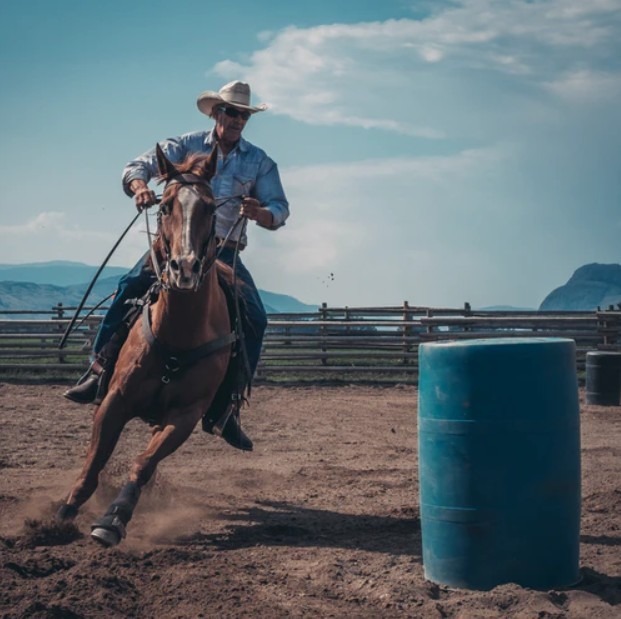For years, cowboys have remained a very popular group in America. Although they originally originated in Mexico but with time the American cowboys have developed a style and reputation of their own. Today, they live quite a glamorous life with many actors and singers pushing themselves into acting and producing hit records. Plus, some of the characters have also been glamorized in countless books as well. Even though the cowboy culture continues to thrive, its history is rough, lonely, and oftentimes gruesome. Let’s take a look.
Vaqueros
It was shortly after 1519 when the Spanish had arrived in America and started building ranches to look after their cattle and other livestock. Horses were directly imported from Spain and put to work on the ranches. Mexican native cowboys were referred to as vaqueros, which comes from the Spanish word vaca that means cow. At the time the vaqueros were known for their skills related to riding, roping, and herding and were hired by ranchers to look after the livestock.
By the early 1700s, ranching made its way into present-day Texas, Arizona, New Mexico, and as far south as Argentina. It was the start of the California missions in 1769 that introduced livestock practices to more areas in the West. Then, by the early 1800s, many English settlers had migrated to the West and adopted the aspects of vaqueros culture including their cattle-driving methods and clothing style. At the time, cowboys did not only belong to Mexico but diverse backgrounds such as Mexicans, African-Americans from Europe, and the eastern United States as well.
Manifest Destiny and American Cowboys
In the mid-1800s, the United States was trying to connect to the West by building railroads and the cowboys had played a crucial role in the nation’s “Manifest Destiny” as Westward expansion would change the course of history. The cowboys herded and rounded up livestock that was sold around the country through rail transportation. Since there were thousands of cattle at a time, it was easy for them to get mixed up with other cattle. Therefore, the cowboys marked their hides to keep a check on what belonged to them.
Open Range vs Barbed Wire
It was 1865 when the Civil War had ended and the Union Army had consumed almost the entire beef supply in the North and therefore, the demand for Beef increased. At the same time, the expansion of the meatpacking industry also contributed to the increased consumption of beef. By 1866, millions of longhorn cattle were lined up and gathered at railroad depots to be transported and sold.
Back then, cattle were sold to northern markets for nearly $40 per head. By the late 1800s, ranching continued to be widespread while settlers were permitted to claim public lands in order to raise purchased cattle. However, by the 1890s, most of the lands became privatized due to feuds over land ownership being settled and the use of barbed wire became quite popular and widespread.
Everything was going well until 1886-1887 when thousands of cattle died when the temperatures dropped below freezing in some parts of the West. It was believed by many that the devastating winter was the end of the cowboy era. As a result, cattle drives continued but on a smaller scale. Most cowboys were hired by ranchers in the West and gave up the open trail life.
Cowboy Life
Back in the early days, cowboys were mostly young men who were looking to earn some money. An average cowboy made around $25 to $40 per month. Apart from herding the cattle, they also looked after the horses and repaired buildings and fences. Furthermore, they also worked cattle drives and in some cases helped establish frontier towns.
In addition to that, some cowboys occasionally developed a bad reputation and were even banned from certain establishments. They usually wore long hats with wide brims to protect them from the sun. Plus, they had tough and large boots as well to help them ride horses and bandanas to protect them from the dust. Some also wore chaps on the outsides of their trousers to protect their legs from rocky terrain and cactus needles.
Cowboys usually lived together in a bunkhouse on a ranch. To entertain themselves, they played some songs, harmonica or guitar. They were also referred to as buckaroos, cowhands, cowpokes, and cowpunchers. The most experienced cowboy was termed, Segundo.
Cowboys Today
With the passage of time, although the number of working cowboys has declined but the occupation remains very much alive and relevant. The cowboy culture is still found in many parts of the United States but relatively less than what used to be centuries ago.
Final Word
Cowboys have played an important role in the development of Texas. Their culture, styles and even the accents still continue to impress many people today. Furthermore, the skills and services offered by them continue to be utilized by livestock owners today who make millions per year selling them to the meat industry. Altogether, they have been through the worst but continue to follow and spread their tradition to the point where it has become a sport as well.


